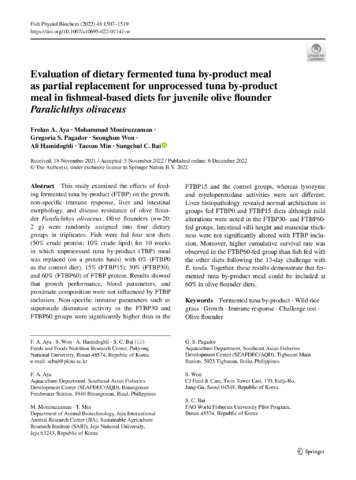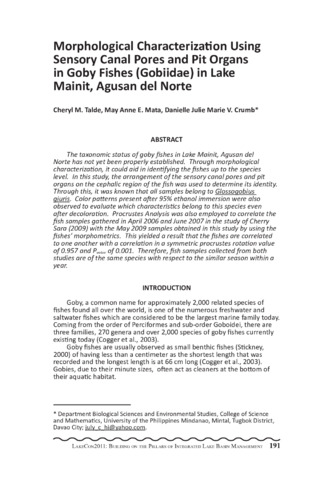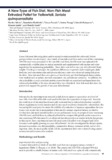Performance, digestibility efficiencies, gut and liver morphologies of snub nose pompano Trachinotus blochii fed spray‐dried haemoglobin meal as protein substitute for fishmeal
- Global styles
- MLA
- Vancouver
- Elsevier - Harvard
- APA
- Help

View/Open
Date
2021-07-12Page views
378ASFA keyword
AGROVOC keyword
Metadata
Perlihat publikasi penuhCited times in Scopus
- Citations
- CrossRef - Citation Indexes: 1
- Scopus - Citation Indexes: 5
- Captures
- Mendeley - Readers: 8
Share
Abstract
Spray-dried haemoglobin meal, a by-product and derivative of the swine processing industry, is formed when haemoglobin is separated hygienically from pig's blood. A 120-days feeding trial using snub nose pompano Trachinotus blochii (1.01 ± 0.02 g) tested spray-dried haemoglobin meal (SHM) as an ingredient in six iso-nitrogenous (crude protein of 50%) and iso-lipidic (crude fat of 8%) diets, namely, a diet with 0% SHM (control) and five diets replacing fishmeal with SHM at 4, 8, 12, 16 and 20%. Weight gain percentage (WG%) significantly decreased (p < 0.05) when fish were fed diets with 12, 16 and 20% SHM inclusion levels. Feed conversion ratio and survival significantly decreased (p < 0.05) when fish were fed diets with 16 and 20% SHM inclusion levels. However, visceral somatic index, hepatosomatic index, condition factor and proximate composition were not affected (p > 0.05) by SHM inclusion levels. As an ingredient for pompano feed, SHM has digestibilities for protein, lipid and dry matter at 89, 78 and 45% respectively. No apparent pathological changes were observed in the intestines. However, physiological changes in the liver have been seen in fish fed diets containing 12, 16 and 20% of SHM. Based on the quadratic regression model at the maximum response of weight gain percentage, the optimum inclusion level of SHM was estimated to be 3.08% (5.87% SHM protein in the diet).
Suggested Citation
Mamauag, R. E., Ragaza, J., & Nacionales, T. J. (2021). Performance, digestibility efficiencies, gut and liver morphologies of snub nose pompano Trachinotus blochii fed spray‐dried haemoglobin meal as protein substitute for fishmeal. Aquaculture Research , 52(11), 5849-5856. https://doi.org/10.1111/are.15459
Type
ArticleISSN
1355-557X; 1365-2109Koleksi
- Journal Articles [1247]
Related items
Showing items related by title, author, creator and subject.
-
Evaluation of dietary fermented tuna by-product meal as partial replacement for unprocessed tuna by-product meal in fishmeal-based diets for juvenile olive flounder Paralichthys olivaceus
Aya, Frolan ; Moniruzzaman, Mohammad
; Moniruzzaman, Mohammad  ; Pagador, Gregoria E.; Won, Seonghun
; Pagador, Gregoria E.; Won, Seonghun  ; Hamidoghli, Ali
; Hamidoghli, Ali  ; Min, Taesun; Bai, Sungchul C. (Springer, 2022-12-06)
This study examined the effects of feeding fermented tuna by-product (FTBP) on the growth, non-specific immune response, liver and intestinal morphology, and disease resistance of olive flounder Paralichthys olivaceus. ...22 Total citations2 Recent citations0.86 Field Citation Ratio0.48 Relative Citation Ratio
; Min, Taesun; Bai, Sungchul C. (Springer, 2022-12-06)
This study examined the effects of feeding fermented tuna by-product (FTBP) on the growth, non-specific immune response, liver and intestinal morphology, and disease resistance of olive flounder Paralichthys olivaceus. ...22 Total citations2 Recent citations0.86 Field Citation Ratio0.48 Relative Citation Ratio -
Series: Summary of Proceedings No. 1/2013;
Morphological characterization using sensory canal pores and pit organs in goby fishes (Gobiidae) in Lake Mainit, Agusan del Norte
Talde, Cheryl M.; Mata, May Anne E.; Crumb, Danielle Julie Marie V. (PCAARRD-DOST, 2013)The taxonomic status of goby fishes in Lake Mainit, Agusan del Norte has not yet been properly established. Through morphological characterization, it could aid in identifying the fishes up to the species level. In this ... -
A new type of fish diet, non-fish meal extruded pellet for yellowtail, Seriola quinqueradiata
Ishida, Noriko; Koshiishi, Tomohiko; Tsuzaki, Tatsuo; Yanagi, Soetsu; Katayama, Satoshi; Satoh, Minoru; Satoh, Shuichi (Aquaculture Department, Southeast Asian Fisheries Development Center, 2015)A non-fish meal diet using plant and/or animal protein materials for yellowtail, Seriola quinqueradiata was developed. Three kinds of non-fish meal diets and a control diet containing 50% fish meal were processed. In the ...





